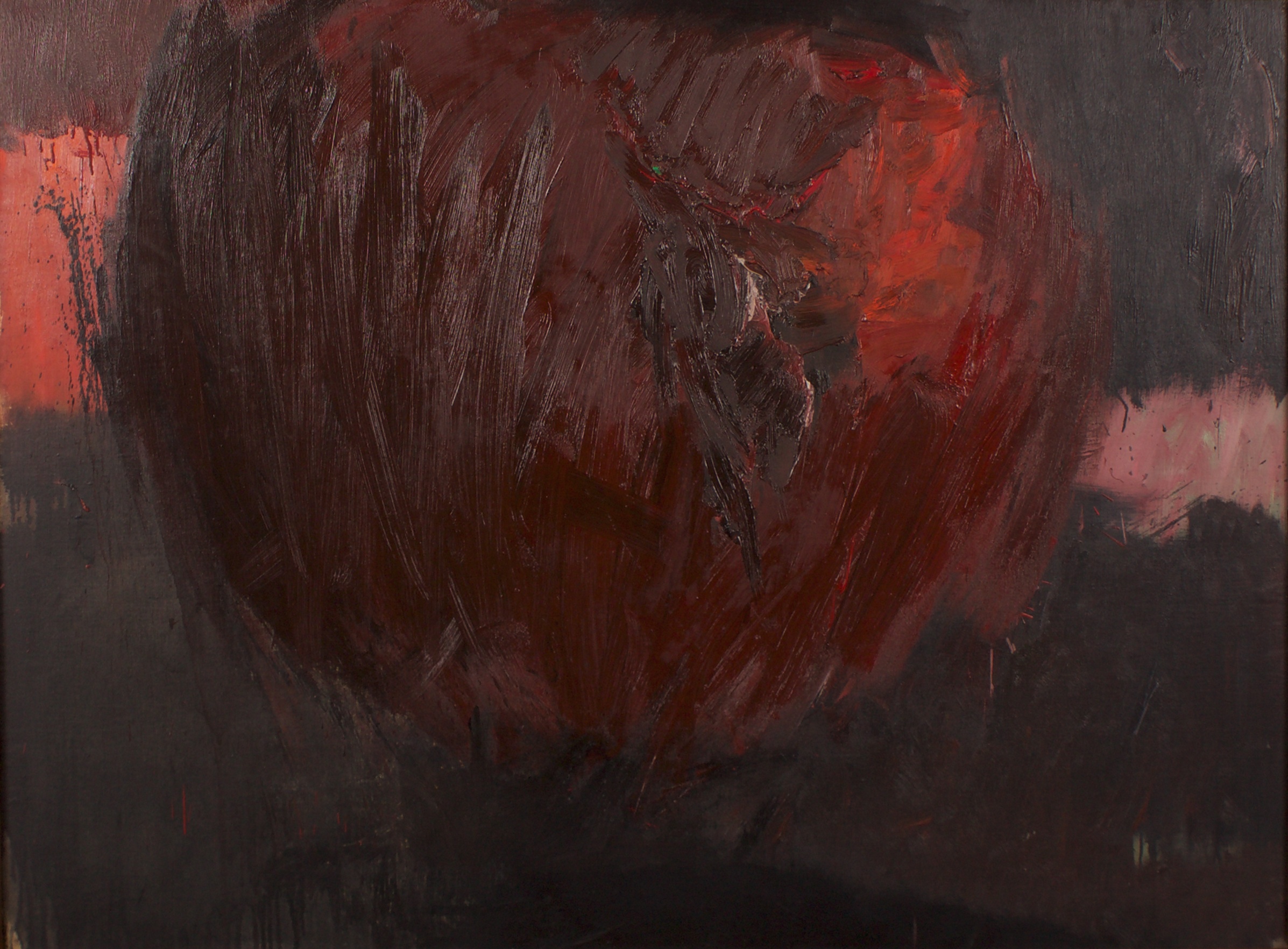RICHARDS RUBEN, Claremont Series, 1960, Oil on board, 35″ x 48″

Richards Ruben
American
(1925-1998)
Richards Ruben constantly searched for new ideas in unexplored territories. He provoked the creative possibilities of sight by utilizing familiar forms and suggestive colors to question the boundaries and limitations with which we restrict ourselves when looking at objects of art or the horizon of our environment.
Ruben painted in a very sculptural way. He drew with his stretcher bars, carving them and shaping the canvas to reflect his interest in how the inner rhythms of the image corresponded with the outer edges of the canvas as well as the canvas’ interaction with the wall itself.
During the 1950s Richards Ruben was a major exponent of abstract expressionism in California. After serving in the army during World War II, he studied in Los Angeles at Chouinard Art Institute, in Santa Monica with RICHARD HAINES, and in Pittsburgh with Samuel Rosenberg (1896-1972). Ruben began teaching in 1948, first in Pennsylvania and from the 1950s in Southern California, at Chouinard, 1954-61, the University of California, Los Angeles, 1958-62, and other institutions. After moving to New York in the early 1960s, he taught at the Cooper Union, Columbia University, and New York University. Solo exhibitions of Ruben’s work have been organized in California by the Oakland Art Museum, 1957, and the San Francisco Museum of Art, 1970, and by the Herbert F. Johnson Museum of Art, Cornell University, Ithaca, New York, in 1974 and 1976. He has received many awards, including a Tiffany grant and fellowships from the Tamarind Lithography Workshop, the Ford Foundation, and the National Endowment for the Arts.
Ruben’s first mature paintings of the 1950s, often derived from landscape and twisting body forms, exhibit a muscularity of shape and a sensuosity of paint as well as an interest in calligraphic line. In the next decade Ruben began to incorporate symmetry and eventually a geometric order into his art and became increasingly concerned with the interrelationship of pure paint and perception; by the 1970s his paintings consisted of lightly colored, highly impastoed surfaces into which linear configurations were etched.
